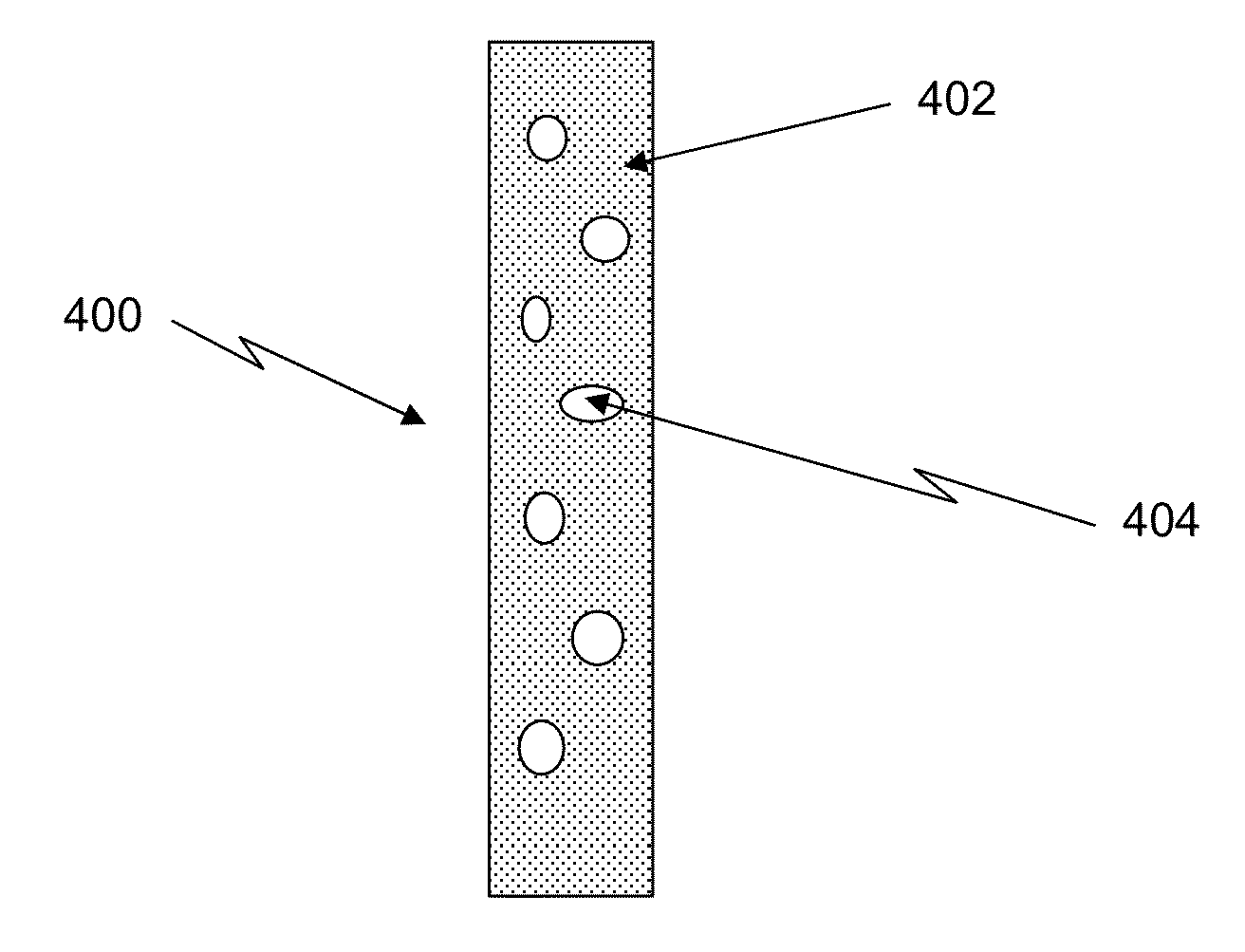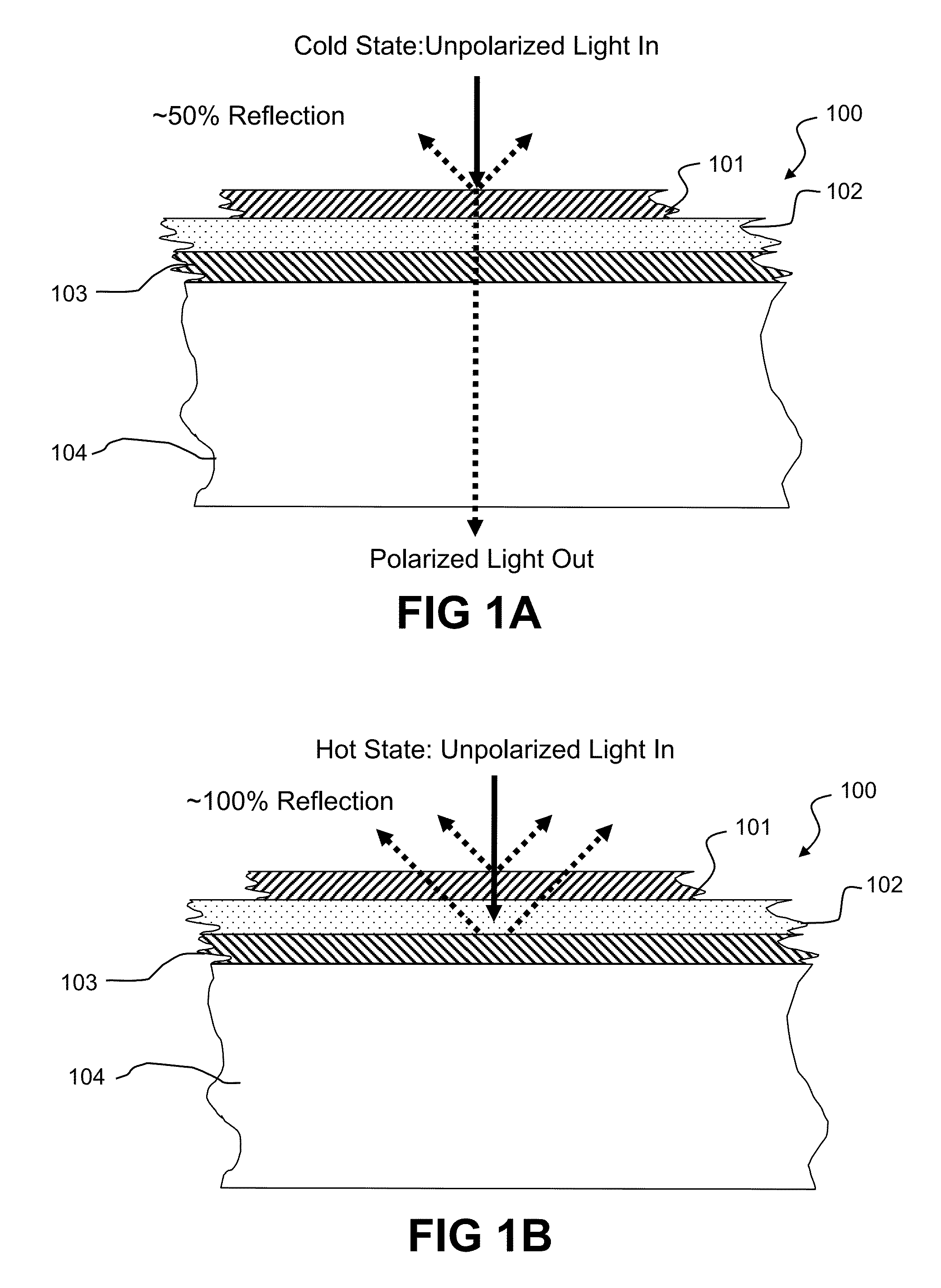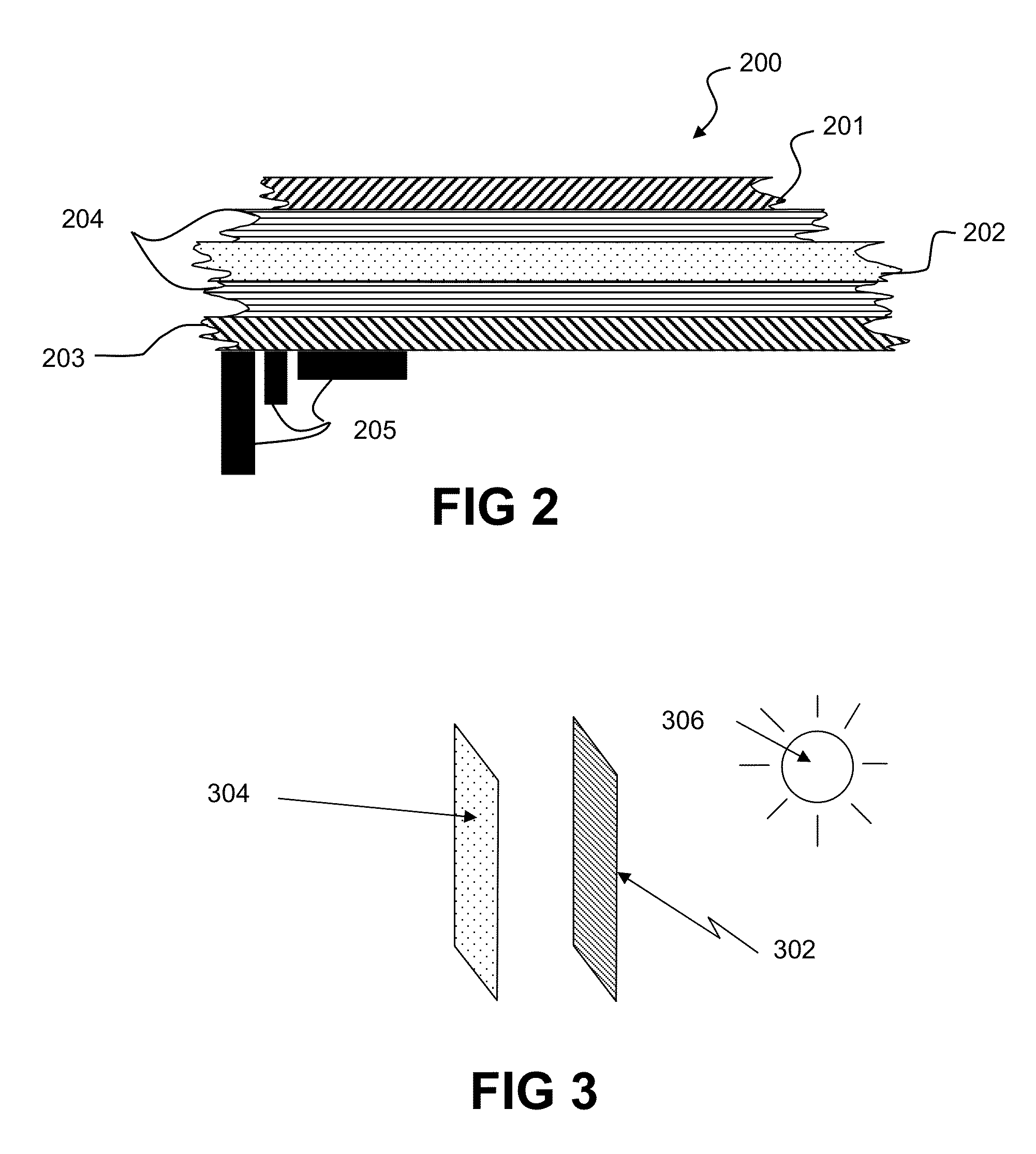Glare management of reflective and thermoreflective surfaces
a technology of reflective surfaces and thermoreflective surfaces, applied in the direction of instruments, polarising elements, other domestic objects, etc., can solve the problems of limited switching speed and cycle lifetime, reduced visibility, and solar heat gain, and achieve the effect of reducing the effect of glar
- Summary
- Abstract
- Description
- Claims
- Application Information
AI Technical Summary
Benefits of technology
Problems solved by technology
Method used
Image
Examples
Embodiment Construction
[0047]Variable, selective, or asymmetric diffusive optics may be used to reduce specular reflection from mirrored surfaces, including reflective and thermoreflective building materials. For the purposes of this specification, the term “thermoreflective” shall refer to any object, device, or material having a reflectivity that varies as a function of temperature. Since glare is primarily a function of specular rather than diffusive reflection of a bright light source, this technology may reduce glare from building, vehicle, and other surfaces.
[0048]U.S. patent application Ser. No. 12 / 019,602 to McCarthy et. al. discloses “thermoreflective” window filters that are largely transparent when cold and largely reflective when hot, and which may be used to regulate the temperatures of buildings when incorporated into windows. One possible embodiment based upon the disclosure is a passive temperature-regulating film for use as a construction material, which may comprise an appliqué that can ...
PUM
| Property | Measurement | Unit |
|---|---|---|
| specular reflectivity | aaaaa | aaaaa |
| reflectivity | aaaaa | aaaaa |
| energy-efficient | aaaaa | aaaaa |
Abstract
Description
Claims
Application Information
 Login to View More
Login to View More - R&D
- Intellectual Property
- Life Sciences
- Materials
- Tech Scout
- Unparalleled Data Quality
- Higher Quality Content
- 60% Fewer Hallucinations
Browse by: Latest US Patents, China's latest patents, Technical Efficacy Thesaurus, Application Domain, Technology Topic, Popular Technical Reports.
© 2025 PatSnap. All rights reserved.Legal|Privacy policy|Modern Slavery Act Transparency Statement|Sitemap|About US| Contact US: help@patsnap.com



